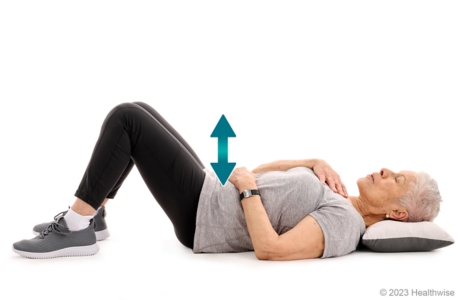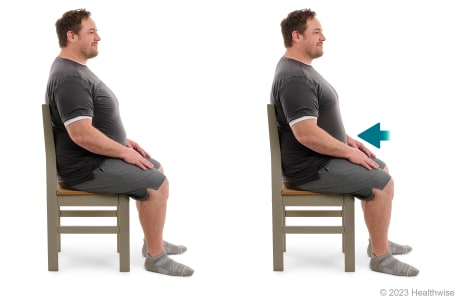Our Health Library information does not replace the advice of a doctor. Please be advised that this information is made available to assist our patients to learn more about their health. Our providers may not see and/or treat all topics found herein. Increasing your core stability means making the muscles of your trunk stronger to keep your spine and body stable. This helps you stay balanced when you move. It can help improve your posture and strength and may help protect your body from injury. Basic core stability exercises can be simple to do. But they take some practice. And it's important to do them the right way. You can start by learning how to: Then practice with some simple exercises, like: Some people find it helpful to work with a physical therapist. The therapist can make sure you're using the right muscles and breathing properly during the exercises. They can also show you more exercises to do. Practice this breathing method 3 or 4 times a day for about 10 minutes each time. When you can do this type of breathing well while lying down, learn to do it while sitting or standing. A neutral spine is the posture that maintains the three normal curves in your spine—one in your neck, one in your upper back, and one in your lower back. Your spine should be in this neutral position when you do core stability exercises. It may seem more relaxing to let yourself slump down. But when you lose the normal curves of a neutral spine, you actually put more stress on your body. The instructions below are for finding a neutral spine when you are standing. You can also find your neutral spine while you lie on your back with your knees bent and while you sit. When you can find your neutral spine in these three positions, you can maintain good posture for daily activities and for exercise. You can do this exercise anywhere, in any position. Try it while you work at your desk, drive, or stand waiting for your turn at the store. Current as of: July 24, 2025 Author: Ignite Healthwise, LLC Staff Current as of: July 24, 2025 Author: Ignite Healthwise, LLC Staff Clinical Review Board This information does not replace the advice of a doctor. Ignite Healthwise, LLC disclaims any warranty or liability for your use of this information. Your use of this information means that you agree to the Terms of Use and Privacy Policy. Learn how we develop our content. To learn more about Ignite Healthwise, LLC, visit webmdignite.com. © 2024-2025 Ignite Healthwise, LLC.Fitness: Increasing Core Stability
How can you increase your core strength and stability?
Breathing with your diaphragm

Finding your neutral spine
Pulling your belly in (abdominal hollowing)

Bridging (feet flat)

Credits
Clinical Review Board
All Ignite Healthwise, LLC education is reviewed by a team that includes physicians, nurses, advanced practitioners, registered dieticians, and other healthcare professionals.
All Ignite Healthwise, LLC education is reviewed by a team that includes physicians, nurses, advanced practitioners, registered dieticians, and other healthcare professionals.
Our Health Library information does not replace the advice of a doctor. Please be advised that this information is made available to assist our patients to learn more about their health. Our providers may not see and/or treat all topics found herein. Current as of: July 24, 2025 Author: Ignite Healthwise, LLC Staff Clinical Review BoardFitness: Increasing Core Stability
All Ignite Healthwise, LLC education is reviewed by a team that includes physicians, nurses, advanced practitioners, registered dieticians, and other healthcare professionals.




